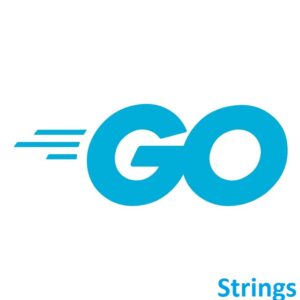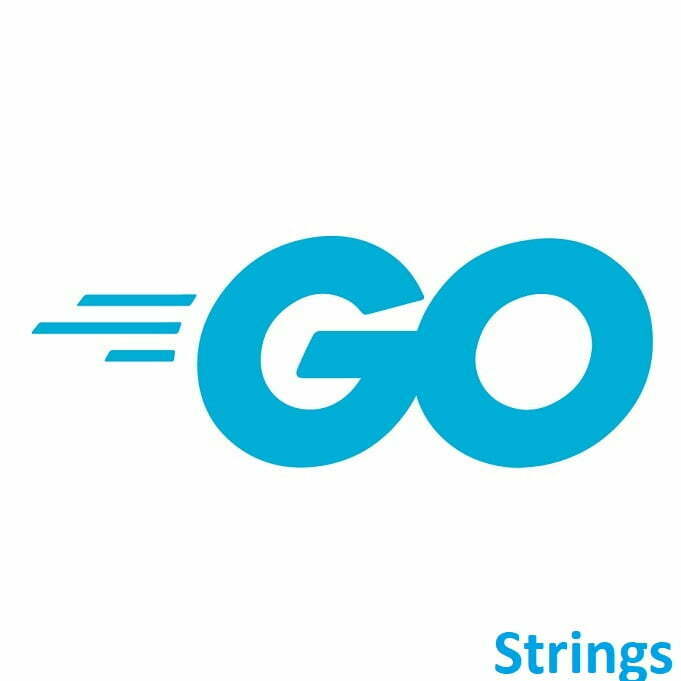
Mastering Strings in Go
Welcome to the world of Golang! Strings are the building blocks of text manipulation in programming. In Go (or Golang), understanding how to work with strings is fundamental to manipulating, parsing, and presenting text-based data effectively. Whether you’re a newcomer to programming or transitioning from another language, this guide aims to demystify the essentials of strings in Go, empowering you to wield this powerful tool confidently.
Strings in Golang
We touched upon strings in the Variables section but Golang actually has a whole package of functions dedicated for strings. The strings package in Go provides functions to manipulate and work with strings. Here are some commonly used functions from the strings package:
Creating Strings:
func NewReplacer(oldnew ...string) *Replacer: Creates a newReplacerwith specified replacements.
String Manipulation:
func Contains(s, substr string) bool: Returns whethersubstris present ins.func Count(s, substr string) int: Returns the number of non-overlapping instances ofsubstrins.func HasPrefix(s, prefix string) bool: Returns whethersstarts with theprefix.func HasSuffix(s, suffix string) bool: Returns whethersends with thesuffix.func Index(s, substr string) int: Returns the index of the first occurrence ofsubstrins, or -1 if not found.func Join(a []string, sep string) string: Concatenates the elements ofausingsepas the separator.func Replace(s, old, new string, n int) string: Replaces up tonoccurrences ofoldwithnewins.func Split(s, sep string) []string: Splitssinto a slice of substrings usingsepas the delimiter.func Title(s string) string: Returns a copy ofswith the first letter of each word capitalized.func ToLower(s string) string: Returns a copy ofswith all Unicode letters mapped to their lowercase.
Whitespace Handling:
func Fields(s string) []string: Splitssinto words (based on whitespace) and returns a slice of substrings.func Trim(s string, cutset string) string: Returns a slice of the stringswith all leading and trailing characters incutsetremoved.func TrimSpace(s string) string: Returns a slice of the stringswith all leading and trailing white space removed.
Conversion:
func Atoi(s string) (int, error): Converts a string representation of an integer to its numeric value.func Itoa(i int) string: Converts an integer to its string representation.
Comparisons:
func Compare(a, b string) int: Compares two strings lexicographically. Returns 0 if equal, -1 if a < b, and 1 if a > b.
These are just a few examples of the functions provided by the strings package in Go. To use these functions, you’ll need to import the package by adding import "strings" at the beginning of your Go source file.
Let’s go through some code examples using the strings library:
String Length:
You can find the length of a string using the len() function.
package main
import (
"fmt"
"strings"
)
func main() {
str := "Hello, world!"
length := len(str)
fmt.Printf("Length of the string: %d\n", length)
}
String Contains:
To check if a string contains a specific substring, you can use the strings.Contains() function.
package main
import (
"fmt"
"strings"
)
func main() {
str := "Hello, world!"
substr := "world"
if strings.Contains(str, substr) {
fmt.Printf("'%s' contains '%s'\n", str, substr)
} else {
fmt.Printf("'%s' does not contain '%s'\n", str, substr)
}
}
String Split:
You can split a string into parts using the strings.Split() function.
package main
import (
"fmt"
"strings"
)
func main() {
str := "apple,banana,orange"
parts := strings.Split(str, ",")
fmt.Printf("Parts: %v\n", parts)
}
String Join:
To join a slice of strings into a single string using a delimiter, you can use the strings.Join() function.
package main
import (
"fmt"
"strings"
)
func main() {
parts := []string{"apple", "banana", "orange"}
joined := strings.Join(parts, ", ")
fmt.Printf("Joined string: %s\n", joined)
}
String Replace:
You can replace occurrences of a substring in a string using the strings.Replace() function.
package main
import (
"fmt"
"strings"
)
func main() {
str := "Hello, world!"
newStr := strings.Replace(str, "world", "Golang", 1)
fmt.Printf("Original: %s\nReplaced: %s\n", str, newStr)
}
String ToLower and ToUpper:
You can convert a string to lowercase or uppercase using the strings.ToLower() and strings.ToUpper() functions.
package main
import (
"fmt"
"strings"
)
func main() {
str := "Hello, world!"
lower := strings.ToLower(str)
upper := strings.ToUpper(str)
fmt.Printf("Lowercase: %s\nUppercase: %s\n", lower, upper)
}
These are just a few examples of how you can use the functions provided by the strings package in Go to manipulate and work with strings.
Conclusion
Congratulations on mastering strings in Go! This is a critical step toward becoming proficient in this programming language. With a solid grasp of string manipulation, you’re better equipped to handle text-based data effectively and efficiently. Remember that strings are immutable, so most string manipulation functions return new strings rather than modifying the original strings in place. As you continue your journey into Go programming, remember that strings are your allies in shaping and presenting information.
That’s All Folks!
You can find all of our Golang guides here: A Comprehensive Guide to Golang





